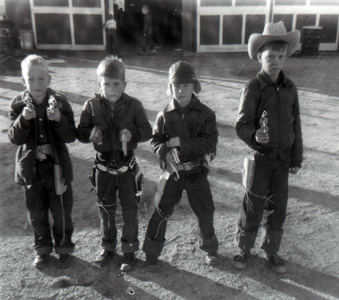Originally posted by Packoderm
| Quote: | Originally posted by Al G
| Quote: | Originally posted by Packoderm
I researched this a bit and found the following: Coke like all "soft drinks" is carbonated with carbon dioxide (CO2)a clear, colorless gas. The CO2 is
dissolved in the water and sugar mixture under pressure. When the CO2 level just above the liquid is lower in concentration than the CO2 level in the
liquid more gas comes out of solution than returns to the solution. The CO2 is lost from the soft drink. When the cap is put onto the bottle the CO2
comes out of solution until the CO2 level above and within the liquid are the same. This is called equilibrium. Shaking a closed bottle of soda will
cause the pressure to rise because the CO2 is not in equilibrium anymore. After some time has passed the pressure will drop back to normal because the
free CO2 will dissolve back into the liquid, regaining equilibrium. If the soda bottle is half full and the cap is returned to the bottle, the CO2
will come to equilibrium using some of the CO2 from the liquid to do so. The larger the space above the liquid the more CO2 will be required to reach
equilibrum. If the cap is left off, the CO2 level will come to equilibrium with the atmospheric CO2 levels (which for this discussion are quite
low)and the coke goes flat. If you squeeze the space out of the bottle before you put the cap on, the amount of CO2 needed to come to equilibrum will
be less and the drink will keep its fizz. There is one problem with this approach though, when you squeeze the bottle and cap it, you create a partial
vacuum. The CO2 level in the space is very low but the pressure will rise when the CO2 comes out of solution. This should inflate the bottle back to
its initial shape and volume. Since the partial pressure of CO2 is all that matters, not the pressure of N2 or O2 from the atmosphere, the amount of
CO2 removed from the liquid will be the same in either case. If the bottle is constrained so that it can not expand then the squeezed bottle will have
more fizz later.
So, to answer my own question, the carbonation would last the longest if the bottle was squeezed and kept squeezed. |
Wrong... |
Are you meaning that that wouldn't keep the soda carbonated the longest because not to open it in the first place would have that effect? I would at
this point like to stipulate that the bottle first being opened would be integral to the experiment. Would the coonskin cap serve as a transporting
device that would keep the bottle from being jarred thus resulting in the freeing of the carbon dioxide from the liquid? |




 xxxxx
xxxxx













 amn he deleted again...he does not like me...
amn he deleted again...he does not like me...

 With this post I do believe I become an... ULTRA Nomad.
With this post I do believe I become an... ULTRA Nomad.







